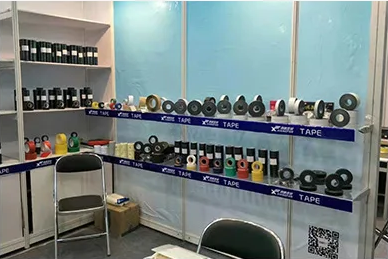Understanding Self-Amalgamating Tape A Comprehensive Guide
In various industrial and domestic applications, the need for reliable, waterproof, and insulating solutions is paramount. One product that has garnered significant attention in this domain is self-amalgamating tape, particularly in widths like 50mm. This versatile tape has revolutionized how we approach electrical insulation, sealing, and repairs.
What is Self-Amalgamating Tape?
Self-amalgamating tape, often referred to as self-adhesive or self-fusing tape, is a specialized tape designed to bond with itself upon application. Unlike traditional adhesive tapes that rely on a sticky backing to bond with surfaces, self-amalgamating tape forms a solid mass when overlapping layers of the tape are pressed together. This unique property enables it to create a water-tight seal, as well as insulate and protect various surfaces effectively.
Typically made from a blend of silicone or rubber, self-amalgamating tape is durable and highly resistant to environmental stressors such as UV radiation, heat, and moisture. Its ability to withstand extreme temperatures makes it ideal for outdoor applications and in harsh conditions.
Applications of Self-Amalgamating Tape
Self-amalgamating tape is widely used in numerous applications across different industries. One of its primary uses is in electrical insulation, where it is employed to cover exposed wires and connections. The tape’s exceptional dielectric properties make it a preferred choice for preventing short circuits and electrical failures.
In addition to electrical applications, self-amalgamating tape is commonly used in plumbing repairs. Whether it's sealing leaking pipes or creating waterproof seals around fittings, this tape provides a quick and effective solution. Its ability to adhere to various materials, including metal, plastic, and rubber, makes it a versatile choice for repairs in diverse environments.
self amalgamating tape 50mm

Automotive applications also benefit from self-amalgamating tape. Mechanics use it for insulating electrical connections, protecting wiring harnesses, and sealing components to prevent moisture ingress. Its durability ensures that repairs hold up in the demanding conditions that vehicles often encounter.
Benefits of Using 50mm Self-Amalgamating Tape
Choosing a 50mm width of self-amalgamating tape offers several advantages. The wider tape provides broader coverage, which is particularly beneficial for larger surfaces or applications where more stability is required. Its width allows for quicker application, as fewer layers need to be applied to achieve the desired thickness and insulation.
Additionally, the 50mm width enhances the tape's integrity, making it less susceptible to tearing or peeling over time. This is especially important in high-tension environments where traditional adhesives might fail due to stress or environmental factors.
Application Process
Applying self-amalgamating tape is straightforward. It is vital to ensure that the surface is clean and dry before application. Begin by stretching the tape as you wrap it around the desired area, overlapping each layer by at least half the tape's width. This ensures proper fusion and the formation of a robust seal. Once the application is complete, the tape will begin to amalgamate, creating a solid, uninterrupted barrier against moisture, air, and other potential contaminants.
Conclusion
Self-amalgamating tape, particularly in a 50mm width, is a remarkable product that offers a Reliable, effective solution for electrical insulation, plumbing, and automotive applications. Its unique self-fusing properties, coupled with its durability and versatility, make it an essential tool for professionals and DIY enthusiasts alike. Whether you’re dealing with a minor repair or a significant project, incorporating self-amalgamating tape into your toolkit can simplify the process and ensure a lasting outcome. As technology advances, we can expect further innovations in this space, reinforcing the tape’s status as a go-to solution for various repair and maintenance tasks.
-
XIANGFAN Rubber Tape-Ultimate Solutions for All Your Insulation NeedsNewsJun.24,2025
-
XIANGFAN Rubber Tape-Protection for Industrial and Residential ApplicationsNewsJun.24,2025
-
XIANGFAN Rubber Tape: Superior Safety and Sealing for Demanding EnvironmentsNewsJun.24,2025
-
XIANGFAN Rubber Tape: Reliable Solutions for Every Electrical ChallengeNewsJun.24,2025
-
XIANGFAN Electrical & Industrial Tape: Powering Reliability Across IndustriesNewsJun.24,2025
-
XIANGFAN Electrical & Industrial Tape: Excellence in Every ApplicationNewsJun.24,2025
